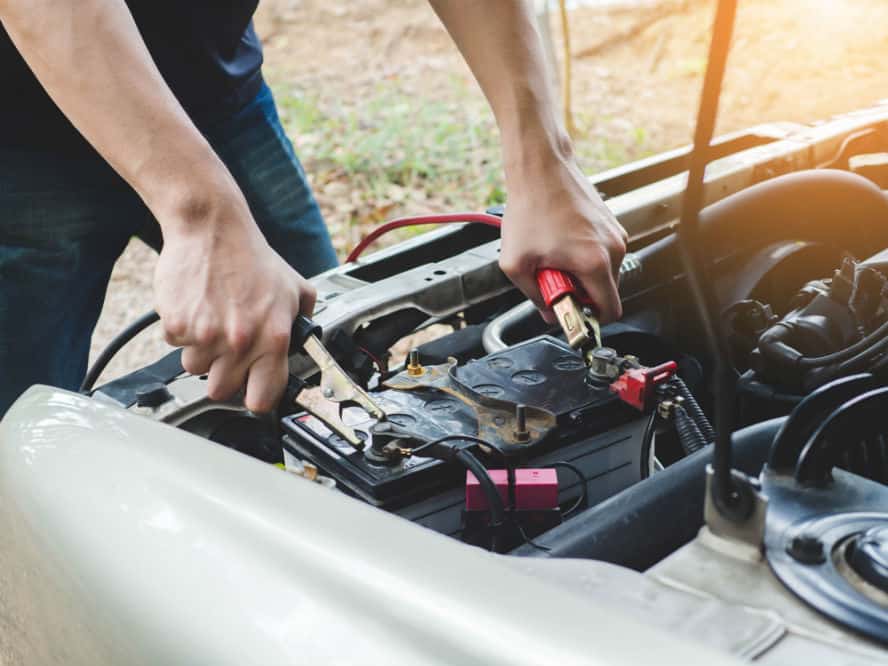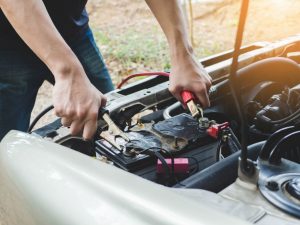The term “jump start” might be familiar to you. You may also have even seen people use a jumper cable. However, you have no idea why such a cable is used and what exactly a jump start does.
Well, a jumper cable can be used to charge a battery. Although the concept sounds strange, jump starting is actually one of the quickest ways to charge a dead battery. However, you should understand the process of how to charge a car battery with jumper cables because failure to do so might cause some damages.
How to Charge a Car Battery with Jumper Cables: The Basics
If you attempt to start your vehicle, but there is no power going to the starter, you may need to get a jump start. However, you may be unfamiliar with the location of certain parts of the car. If such is the case, then you must seriously consult your car’s user manual for some general tips. Usually, these manuals will give you advise on how to connect a jumper cable. To get a visual representation of how it is done, you can also watch a YouTube video.
Nonetheless, below is a general and simple guide for you.
- Choosing the Right Cables
So, getting the job done means that you need the right set of tools for assistance. If your car’s battery is dead, to begin the process, you will need another car with a functioning battery. Jumper cables are available for purchase in different lengths and should be an accessory that most drivers have.
While a longer cable may be convenient for the drivers, the energy has a longer distance to travel to charge the battery. Hence, you should not get a cable that is too long. With that in mind, in terms of cabling, the gauge will determine its strength. Six is the standard gauge size of thicker and stronger cables.
- Safety Guides
Using a jumper cable to charge your car’s battery is an electrical process; therefore, electrical safety protocols should be followed. Read the manual as not all jump starts are standard. Also, take lots of care to prevent being the victim of an electrical shock.
To do so, once the cables are connected to the cars, you should not touch anything metal such as the clamps as it can be an easy target. To protect your eyes, you should consider wearing safety glasses. In addition, as a rule of thumb, you should not handle electrical products with a hand that is damp or wet. So, wear rubber gloves since they will protect your hands.
Another thing for you to keep in mind is that the batteries should be in good condition. They should not display signs of damage such as cracks and battery acids or leaks. Also, you should ensure that your battery cables are not corroded. If they are, you can clean them with a stiff brush. Likewise, if your jumper cable is not long enough, you should never attempt to connect two pairs as such is a fire hazard.
- Preparing for the Jump
Before jump-starting the car’s battery, the cars should face each other and should not be more than eighteen inches apart. The gear of automatic cars needs to be in the park setting while manual vehicles should be in neutral mode. The parking brakes should also be on, keys removed and cars turned off. Put the cable on the ground and keep the clamps away from each other.
After which, open the hoods of both vehicles and locate the battery terminals. Battery terminals are negative (-) or positive (+) and are usually red or black. You can look for the signs. You may also wipe the terminals for visibility. Once located, the positive end of the jumper cable should be connected to the positive terminals of the batteries. The positive jumper cable is not labeled but is red in color and the negative cable is black.
Of course, the negative jumper cable should only be connected to the negative terminal of the battery that is fully charged. The other end of the negative jumper cable should not be attached to the negative terminal of the dead battery, but to unpainted metal. This unpainted metal can be a nut on the engine.
- Timing
Next, once everything is connected, you need to start the engine of the car with the functional battery. It’s charging system will help charge the battery using the jumper cables. You should wait for at least five minutes to give the battery a chance to build its own charge. Indeed, five minutes is not sufficient enough to charge a dead battery fully, but it is a start. After the five-minute period, you should then attempt to start the other car. The car should start, and that is the sign that the battery received enough power.
Once the car has started, you can disconnect the jumper cables from each car in reverse order of your connection. That is, you remove the negative clamp on the unpainted metal part of the car first before removing any other clamps again in the order in which they were placed. You should not turn off the engine of the car that was just jumped. It should be left running for at least five minutes. That way, the car’s alternator will help recharge the car’s battery. You should also drive the car so that your battery can be fully charged. If it is not, you may need to have it replaced.
- Troubleshooting
There are several reasons why the jump start may fail, and these might be related to issues with the battery or nearby components such as fuses, the alternator, the ignition switch or even battery corrosion. If your battery is old or expired, rather than attempting to jump start it, you ought to consider having it replaced.
Conclusion
How to charge a car battery with jumper cables seems to be a very easy process, so long as your battery is free from damage and there are no other issues for you to worry about. However, for the process to be successful, you should have the right tools to get the job done. Such include jumper cables of appropriate lengths and those that have small gauges for better connectivity. You should also follow the safety tips given here to avoid electric shock.


